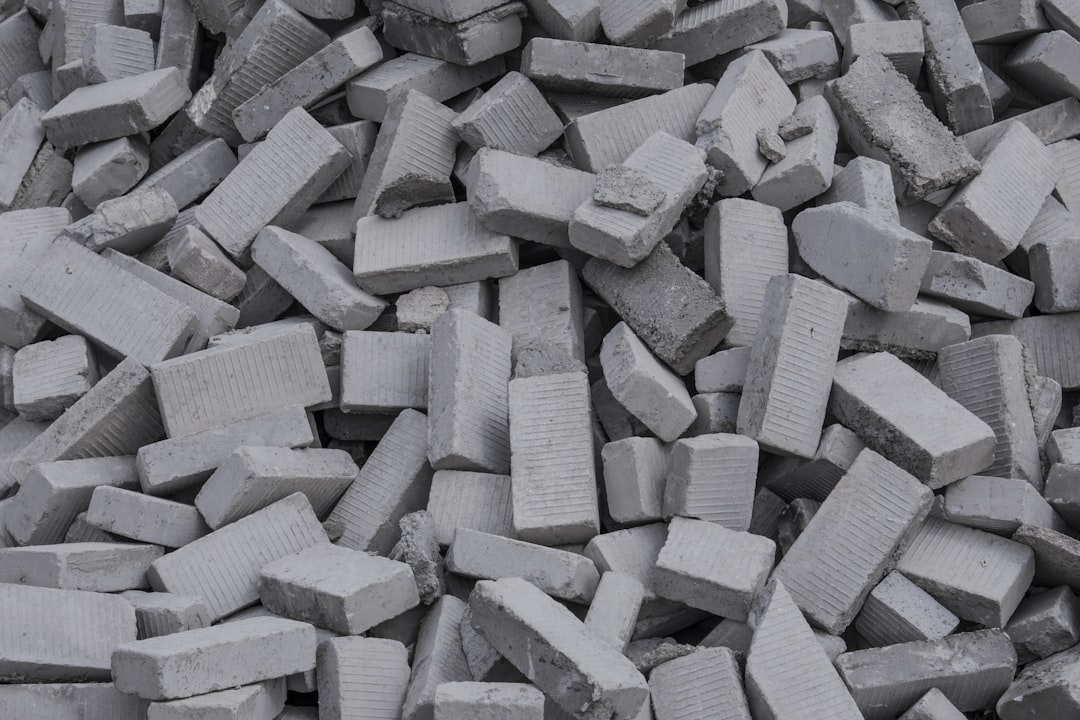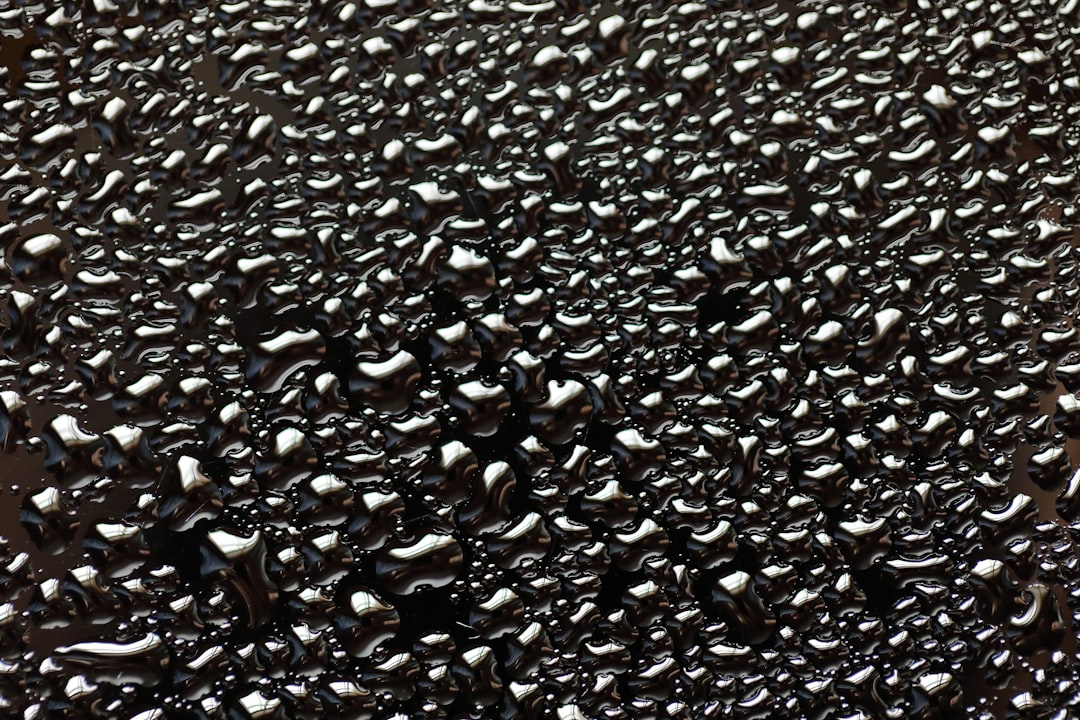

Engage prospects with a scan and streamline customer engagement with FREE QR code marketing tools by Sona – no strings attached!
Create a Free QR CodeFree consultation

No commitment

Engage prospects with a scan and streamline customer engagement with FREE QR code marketing tools by Sona – no strings attached!
Create a Free QR CodeFree consultation

No commitment
Carbide product manufacturers are embracing QR codes as effective tools to bridge the gap between operational floors and digital ecosystems. With an industry marked by complex workflows, strict quality controls, and evolving customer expectations, QR code technology delivers instant access to product data and technical resources, streamlining processes and enhancing buyer engagement at every point of contact.
The transition from analog processes to integrated digital solutions is especially beneficial for manufacturers managing large inventories, compliance documentation, and global distribution networks. Instead of relying on manual records or static signage, dynamic QR code systems now connect every physical asset with its digital footprint, making it easier to track interactions, identify new leads, and eliminate revenue loss from missed engagements. Platforms like the Sona QR product overview make this connection campaign-ready.
Incorporating QR codes across the carbide manufacturing process results in greater transparency, improved traceability, and a competitive edge through frictionless experiences and real-time, actionable insights. By ensuring each touchpoint is tracked and engagement signals are surfaced using accurate, current account data, manufacturers can maximize efficiency, meet regulatory requirements, and discover new opportunities for business growth.

QR codes are transforming how carbide product manufacturers manage data, customer engagement, and operational efficiency. By digitizing points of friction such as manual product lookups, shipping paperwork, and equipment maintenance logs, QR codes deliver instant access, improved data, and automated workflows. They minimize effort for frontline teams and buyers while surfacing granular engagement signals that can be used for targeted follow-up.
Across the production floor and the customer lifecycle, QR codes replace legacy processes that are slow and opaque. Printed manuals become living documentation that is always current. Paper-based inspection forms become mobile-optimized checklists that sync to your quality system. Business cards become scannable contact badges that route to the right territory rep. Each scan creates a measurable data point that supports better decision-making and faster support.
This full transformation turns missed opportunities into measurable outcomes. Once scans feed account-level data into your systems, you can see which assets drive engagement, which roles are scanning, and how those interactions progress into quotes, reorders, and renewals. Over time, the same analytics unearth new use cases that improve quality, throughput, and customer satisfaction.

Speed, compliance, and data accuracy are essential in carbide manufacturing. Persistent issues like manual errors, slow customer response times, and limited visibility into who engages with your assets can result in lost opportunities. When a distributor cannot easily find a tool’s cutting parameters or a machinist needs an MSDS during a line change, delays ripple through production. QR codes help resolve these challenges by compressing time to information and connecting every physical interaction with a digital trail.
Visibility also matters during audits and warranty claims. Without a reliable way to attribute documentation access or confirm that the latest revision was used, teams spend valuable time reconciling evidence. QR code programs bring clarity to these moments. You can see exactly which lot numbers, packing slips, or equipment IDs were scanned, by whom, and when, which simplifies compliance and improves customer trust.
Common QR-enhanced assets include datasheets, product labels, safety instructions, compliance certificates, invoices, and shipping documents. Once these assets are connected to digital destinations, every scan becomes a signal of intent that supports smarter outreach, better customer experience, and continuous process improvement.

Carbide manufacturers benefit from a range of QR code formats. Selecting the right one depends on the action you want users to take and the type of content they need. For example, engineering teams may need direct access to CAD models and MSDS, while buyers prefer reorder forms, distributor lookups, or quick access to pricing. Choosing a format that aligns with the moment and the user role improves outcomes.
Dynamic QR codes are recommended when content may change or when analytics matter. Static codes can be suitable for long-lived, unchanging resources such as safety posters or facility maps. Many programs use a blend of both, with dynamic codes for external touchpoints and static codes for internal signage that rarely changes.
To decide between dynamic and static formats, consider the risk and cost of reprinting, the need for analytics, and the likelihood of content updates. As a rule of thumb, use dynamic for anything customer-facing or campaign-driven, and static for internal references that rarely change.

Deploy QR codes wherever physical assets and digital processes intersect to convert friction into actionable data. In carbide manufacturing, these intersections appear throughout the lifecycle: from product ideation and testing, to packaging and shipping, to field installation and ongoing use. Each placement can drive a high-value action such as a reorder, a support request, a certification download, or a sales inquiry.
Start by mapping the buyer and user journeys. Identify the moments where customers must pause to search, email, or call for information. Those pauses are your signal to add a QR code and a clear call to action. With Sona QR, each code can be tagged by channel, event, product line, and geography, giving you granular insights into what is working.
Focus on high-visibility locations and make the benefit clear. The best programs combine practical utility with measurable outcomes, so every scan either saves time, removes friction, or generates revenue.

QR codes are effective when they connect a specific physical item to a specific digital action. In carbide manufacturing, three repeatable use cases deliver consistent value: product traceability, maintenance scheduling, and technical resource access. Each one simplifies a complex process while creating a measurable trail of engagement.
The table below outlines what each use case does and why it matters. Design your first rollout around one or two of these so you can launch quickly and prove value. Once the workflow is stable, expand to adjacent touchpoints to scale the impact.
Use Case | Description | Outcome ---|---|--- Product Traceability | QR codes link each unit to a digital chain of custody | Greater trust, smoother audits Maintenance Scheduling | Codes on equipment access service logs and requests | Reduced downtime, improved compliance Technical Resource Library | QR codes on packaging link to spec sheets, MSDS, CAD drawings | Fewer support calls, better customer satisfaction
Beyond these foundational examples, consider how QR codes can facilitate customer education and cross-sell. For instance, codes placed on a tool’s protective case can open a quick-start video and a compatible insert selector. Codes on pallet straps can lead to a receiving checklist and ASN confirmation, while also notifying your team that goods arrived and were checked.
Using QR codes for the right engagement signals helps you time outreach more effectively. When someone scans a tool’s cutting data multiple times, your system can offer a free tooling audit or propose an updated geometry that matches their material mix and machine capabilities.
Each scan can reveal buying intent, product use, and information gaps that traditional analytics often miss. By assigning unique codes to different products, placements, and stages of the journey, you can automatically segment your audience and feed those segments into your CRM and ad platforms. The result is precision retargeting based on observed behavior rather than assumptions, supported by Sona’s retargeting playbook.
In carbide manufacturing, buyer roles vary: OEM engineers, job shop owners, purchasing teams, maintenance technicians, and distributors. Each role scans for different reasons, and each should receive a tailored follow-up. With Sona QR, you can tag codes for role, channel, and context, then trigger next steps in email, SMS, or ads.
In practice, this approach lets you prioritize high-intent signals. A scan of a carbide insert’s cutting data followed by a scan of an order form is a strong indicator of purchase readiness. A scan of a maintenance guide suggests a service need. With clear tags and automated workflows, your team can respond to both at scale without guesswork.
QR codes serve as connectors across offline and digital campaigns, turning static materials into interactive experiences. For carbide product manufacturers, they unify catalogs, packaging, events, and field sales into a single data-driven system. The same code that helps a machinist find a parameter can also enrich a lead record, trigger a campaign, and attribute revenue to the channel that created the opportunity.
A thoughtful integration approach respects context. The QR code on a booth display should promise a compelling asset like a cutting data cheat sheet, while the code on a delivery note might lead to feedback and reorder options. The goal is consistent utility that also fuels attribution and optimization.
Centralized analytics convert this multi-channel activity into insights. With Sona QR, you can manage all codes, monitor performance by placement, and sync scan events with your CRM and ad platforms for a coherent view of engagement and pipeline influence.
Getting from idea to impact requires a structured approach. A concise checklist helps your team launch quickly and scale what works. The steps below outline how to plan, deploy, and optimize a QR campaign tailored to carbide manufacturing environments and audiences.
Before you begin, align stakeholders on goals and scope. Choose one or two high-value use cases such as linking packaging to cutting data or adding reorders to invoices. Start small and optimize, then expand to adjacent touchpoints as you gather evidence of impact.
Identify the business outcome you want to achieve and the asset that will carry the QR code. For example, reduce support inquiries by attaching codes to packaging that route to spec sheets and MSDS, increase reorders by adding a Scan to reorder label to invoices, or accelerate audits by placing codes on certificates that open verification pages.
Define what success looks like. Set a baseline number of scans, a target conversion rate into form submissions or chat, and a goal for time saved in support or quality assurance. Map the user journey for each role so the destination fits the context and the call to action is crystal clear.
Choose static or dynamic based on how often the destination may change and whether you need analytics. Static codes work for long-lived facility signage and basic contacts. Dynamic codes are ideal for packaging, events, and campaigns where you want to edit links, add UTM parameters, and measure scans by channel and device.
If you plan to integrate scans with your CRM or use retargeting, select dynamic. Sona QR lets you edit destinations after printing, apply tags for segmentation, and unify scan metrics across campaigns, which protects your print investment and improves reporting.
Design codes that are unmistakably yours. Add your logo, use brand colors in the frame, and include a benefit-focused CTA near the code such as Scan for cutting data or Scan to verify certificate. Ensure sufficient contrast, a quiet zone, and a size that fits viewing distance. As a guideline, use at least 2.5 cm for close-range scans and scale up for signage.
Test on multiple devices, from older Androids to the latest iPhones, and in realistic conditions. Check scannability under shop lighting, at common angles, and on curved surfaces like tool cases. Confirm that the destination loads fast on mobile and that analytics are recording correctly in Sona QR.
Roll out in the places most likely to drive the outcome you want. For carbide manufacturers, start with packaging, shipping inserts, trade show displays, and invoices. Add codes to machine enclosures, tooling cabinets, and lockout-tagout stations for internal use cases such as SOP access and service logging.
Match placement to audience behavior and scanning context. A code on a moving machine is less useful than one on a nearby placard. A code on an invoice should be above the fold and paired with a strong CTA. Track placement variants as separate codes so you can compare performance and shift print budget to the winners.
Instrument your campaign from day one. Use Sona QR to track scans by time, location, device, and code. Monitor conversion behavior such as form completions, downloads, and chat engagements. Add UTM parameters so downstream analytics connect scans to web outcomes and revenue attribution.
Use early results to make iterative improvements. A or B test landing pages, change CTAs, adjust code size, and refine placements. Share learnings across teams so operations, sales, and marketing can align on what works and scale it to new products and regions.
A short weekly review keeps momentum. Celebrate quick wins, document lessons, and add the next high-potential placement to your rollout plan.
Accurate measurement lets manufacturers attribute engagement directly to business outcomes. Without tracking, a QR program is just a convenience feature. With tracking, it becomes a performance engine that shows how each scan influenced quotes, orders, and renewals. The objective is to close the loop from the real world to your revenue systems.
Start by deciding which signals matter most. For example, you might prioritize total scans by product line, scan-to-form completion rate, and time from scan to sales follow-up. Combine these metrics with journey analysis to see whether a packaging scan leads to a CAD download, then to a sales call, then to a purchase order. This view helps teams invest in high-yield placements and retire underperforming assets.
With a closed-loop model, you can decide where to allocate budget, which products need better documentation, and which channels deliver the most value. Over time, the data will point to new opportunities such as adding QR to pallet straps for receiving confirmation or to training certificates for recertification reminders.
Once your first use cases prove value, expand with best practices that maximize scan rates, data quality, and ROI. The most effective programs emphasize clarity of benefit, consistency of design, and tight integration with sales and service workflows. They also educate staff and customers on how scanning makes life easier.
Creative deployment does not have to be complex. A simple Scan to reorder label on a frequently used insert dispenser can drive measurable uplifts in repeat purchases. A code on a coolant drum that opens a mixing calculator can cut down errors and support calls while capturing shop-level insights.
You can generate and track your first QR codes for free with Sona QR. Start creating QR codes for free. Create branded codes with tags, and go live in minutes. As results come in, use Sona.com to connect offline engagement to pipeline and revenue, building the case for wider rollout.
For carbide manufacturers, QR codes enable seamless access to data and support, transforming every physical document and asset into a powerful channel for engagement and growth. They reduce the time it takes to find critical information, simplify compliance, and make measurement possible in parts of the journey that were previously invisible. When you know who scanned, where, and why, your team can deliver the right next step with confidence.
With the right approach, you can unlock three strategic benefits. First, instant and secure digital access that trims manual work and improves accuracy. Second, a connected journey from prospect to repeat customer, where every scan informs the next interaction. Third, actionable data that turns interest into insight and insight into measurable results. Sona QR gives you the tools to manage, track, and optimize these programs at scale, while Sona.com links scans to pipeline and revenue.
By embedding QR codes across operations, carbide product manufacturers can boost efficiency, reinforce compliance, and enrich customer engagement. QR-driven strategies address pain points like missed leads, lack of visibility into offline interactions, and delayed outreach, while adding flexibility and analytics for sustained growth. Whether your aim is faster technical support, higher reorder rates, or improved audit readiness, QR codes make each process smarter and more connected with every scan. Start with a focused use case, measure the impact, and scale the placements that clearly move the needle.
QR codes have transformed carbide product manufacturers from traditional, static labeling into dynamic, data-driven engagement tools. Whether it’s streamlining inventory management, enhancing product traceability, or enabling instant access to technical specifications, QR codes replace cumbersome manual processes with quick, mobile-friendly actions—capturing real-time data that drives operational efficiency and customer satisfaction. Imagine instantly providing your clients and partners with detailed product information at their fingertips, improving trust and accelerating decision-making.
With Sona QR, carbide product manufacturers can create dynamic, trackable QR codes in seconds, update information instantly without costly reprinting, and connect every scan directly to actionable insights. This means no missed opportunities and smarter resource allocation across your production and sales channels. Start for free with Sona QR today and turn every QR scan into a gateway for stronger relationships, improved accuracy, and measurable growth.
QR codes provide instant access to product data and technical resources, improve traceability, enhance compliance, simplify workflows, reduce manual errors, and enable real-time engagement tracking that supports better decision-making and customer satisfaction.
Manufacturers can implement QR codes by digitizing analog documentation, placing dynamic codes on packaging, equipment, and signage, integrating scan data into CRM systems for follow-up, and using analytics platforms like Sona QR to track and optimize engagement.
QR codes can be used for product traceability, maintenance scheduling, technical resource access, customer support, warranty registration, lead capture at trade shows, compliance verification, and facilitating reorder workflows.
QR codes connect each physical asset to its digital footprint, capturing scan events with details like time, location, and device, which enables monitoring of engagement, supports compliance audits, facilitates targeted outreach, and provides actionable insights linked to sales and service.
Integrating QR codes reduces costs by minimizing paper use, avoiding reprints through dynamic updates, lowering manual administration, enhancing efficiency, and turning static materials into measurable assets that generate revenue and support growth.
Use Sona QR's trackable codes to improve customer acquisition and engagement today.
Create Your FREE Trackable QR Code in SecondsJoin results-focused teams combining Sona Platform automation with advanced Google Ads strategies to scale lead generation

Connect your existing CRM

Free Account Enrichment

No setup fees
No commitment required

Free consultation

Get a custom Google Ads roadmap for your business






Launch campaigns that generate qualified leads in 30 days or less.
